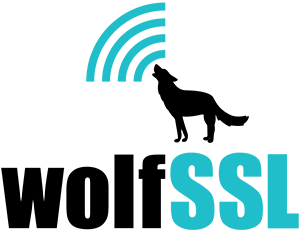Have you heard talk about SSL 3.0, TLS 1.0, TLS 1.1, TLS 1.2, and TLS 1.3 but never really knew the differences between the different versions? Secure Socket Layer (SSL) and Transport Security Layer (TLS) are both cryptographic protocols which provide secure communication over networks. These different versions are all in widespread use today in […]
Read MoreMore TagCategory: Uncategorized
wolfSSL Atollic Static Library Project
Recently, wolfSSL released version 3.15.5 of the wolfSSL embedded SSL/TLS library. This new release contains many feature releases and updates, including the addition of an Atollic TrueSTUDIO static library project for wolfSSL. Atollic TrueSTUDIO is a full-featured IDE used for STM32 development with out-of-the-box support for all STM32 boards and devices, and features advanced debugging […]
Read MoreMore TagwolfSSH SFTP on Windows
wolfSSH has added in enhancements to our SFTP implementation for use on Windows systems. The embedded SSH library can now be used with the default Windows file system. SFTP is a protocol that runs on top of SSH that enables securely accessing, browsing and managing files. The leading edge of wolfSSH code and development can […]
Read MoreMore TagwolfSSL 24×7 support
wolfSSL provides support on four levels, one of which is the 24×7 support level. This support level includes many key features not available on the others, such as an unlimited number of support incidents, around-the-clock support from dedicated members of the wolfSSL support team, and remains in effect for an entire year. wolfSSL provides three […]
Read MoreMore TagwolfSSL Apache Mynewt port
Recently, wolfSSL released version 3.15.5 of the wolfSSL embedded SSL/TLS library. This new release contains many feature additions and updates, including a port to Apache Mynewt. Apache Mynewt is a Real-Time Operating System (RTOS) that is used to build, deploy, and securely manage billions of devices. It is designed for IoT devices that have limited […]
Read MoreMore TagTLS 1.3 combined with FIPS (#FIPS #TLS13)
wolfSSL is a lightweight TLS/SSL library that is targeted for embedded devices and systems. It has support for the TLS 1.3 protocol, which is a secure protocol for transporting data between devices and across the Internet. In addition, wolfSSL uses the wolfCrypt encryption library to handle its data encryption. Because there is a FIPS 140-2 […]
Read MoreMore TagwolfSSL at TRON Symposium (TRONSHOW) 2018
wolfSSL will be exhibiting at the 2018 TRON Symposium (TRONSHOW). wolfSSL will be exhibiting from 10:00am to 5:00pm, on December 12th-14th. The TRON Symposium 2018 will be located at the Tokyo Midtown Hall, with wolfSSL exhibiting at booth B2.Tokyo Midtown Hall: Akasaka 9-7-1, Minato-ku, Tokyo (directions) Stop by to hear about the wolfSSL embedded SSL/TLS library […]
Read MoreMore TagwolfBoot – wolfSSL’s Secure Bootloader
wolfSSL is pleased to announce the first ever release of wolfBoot! wolfBoot v1.0 release page: https://github.com/wolfSSL/wolfBoot/releases/tag/v1.0 wolfBoot is a secure bootloader that leverages wolfSSL’s underlying wolfCrypt module to provide signature authentication for the running firmware. The role of a secure bootloader is to effectively prevent the loading of malicious or unauthorized firmware on the target. Additionally, wolfBoot provides […]
Read MoreMore TagwolfSSL support for Asio and Boost.Asio C++ Libraries
Recently, wolfSSL released version 3.15.5. This new release contains many new feature additions and updates, including the addition of several new ports. One of these ports is for replacing OpenSSL with wolfSSL in the Asio and Boost.Asio C++ libraries! Asio is a cross-platform C++ library for network and low-level I/O programming that provides developers with […]
Read MoreMore TagExpanded PKCS#7 support
Recently, wolfSSL released version 3.15.5. This new release of wolfSSL features many new updates, one of which is expanded support for PKCS#7 Cryptographic Message Syntax (CMS). This contains support for using PKCS#7 with Key-Encryption Key Recipient Info (KEKRI), Password Recipient Info (PWRI), and Other Recipient Info (ORI) types. PKCS#7 is used to sign, encrypt, or […]
Read MoreMore Tag
